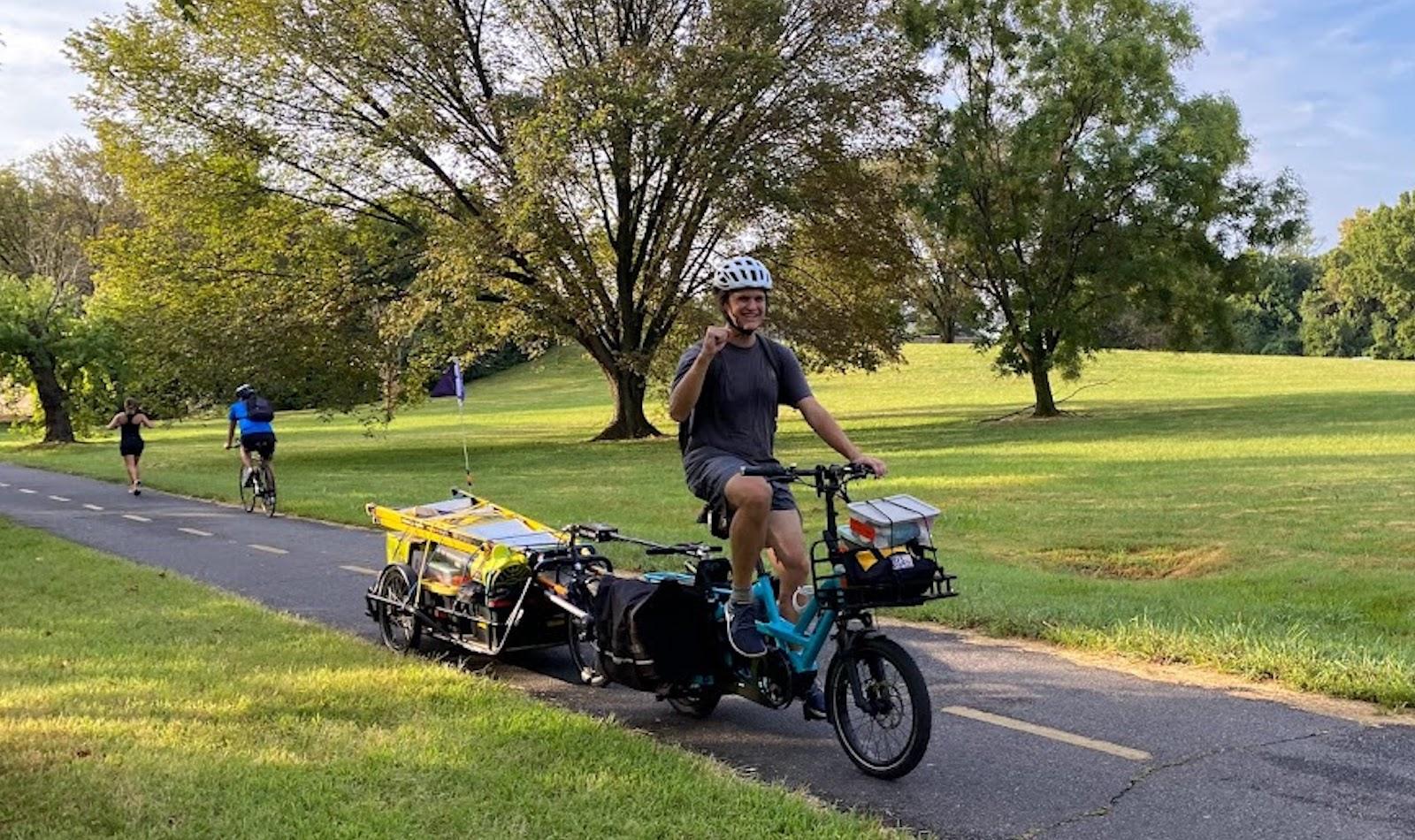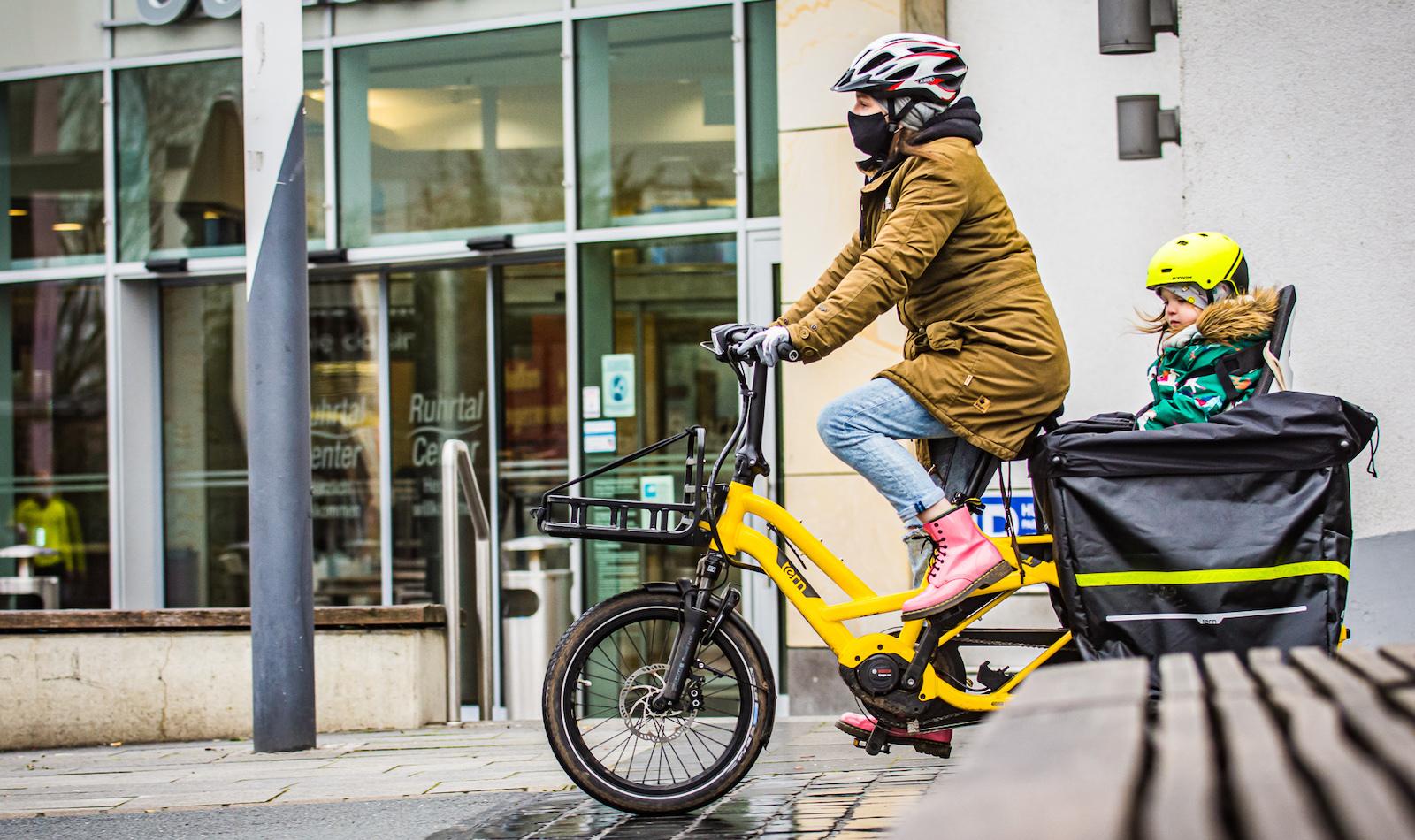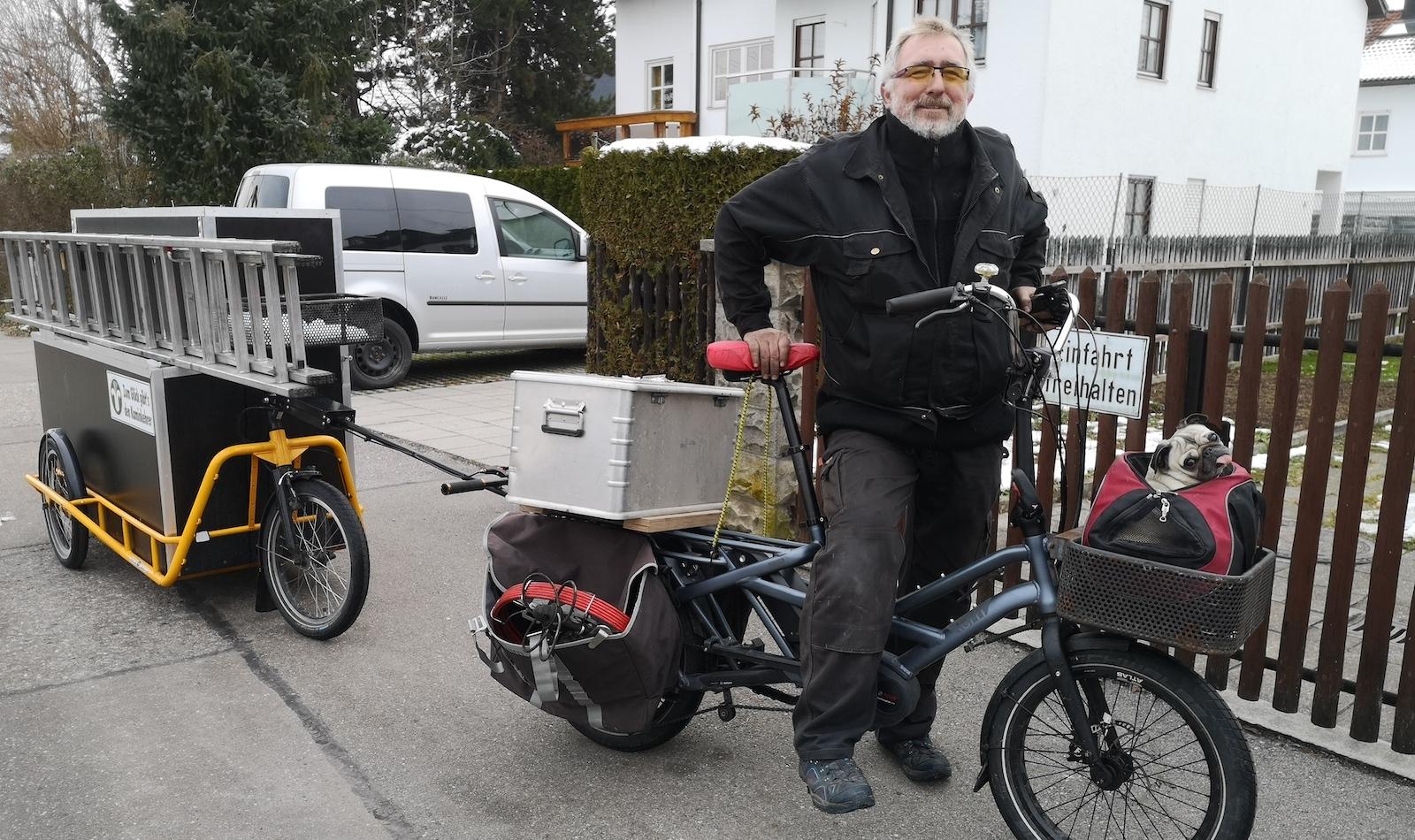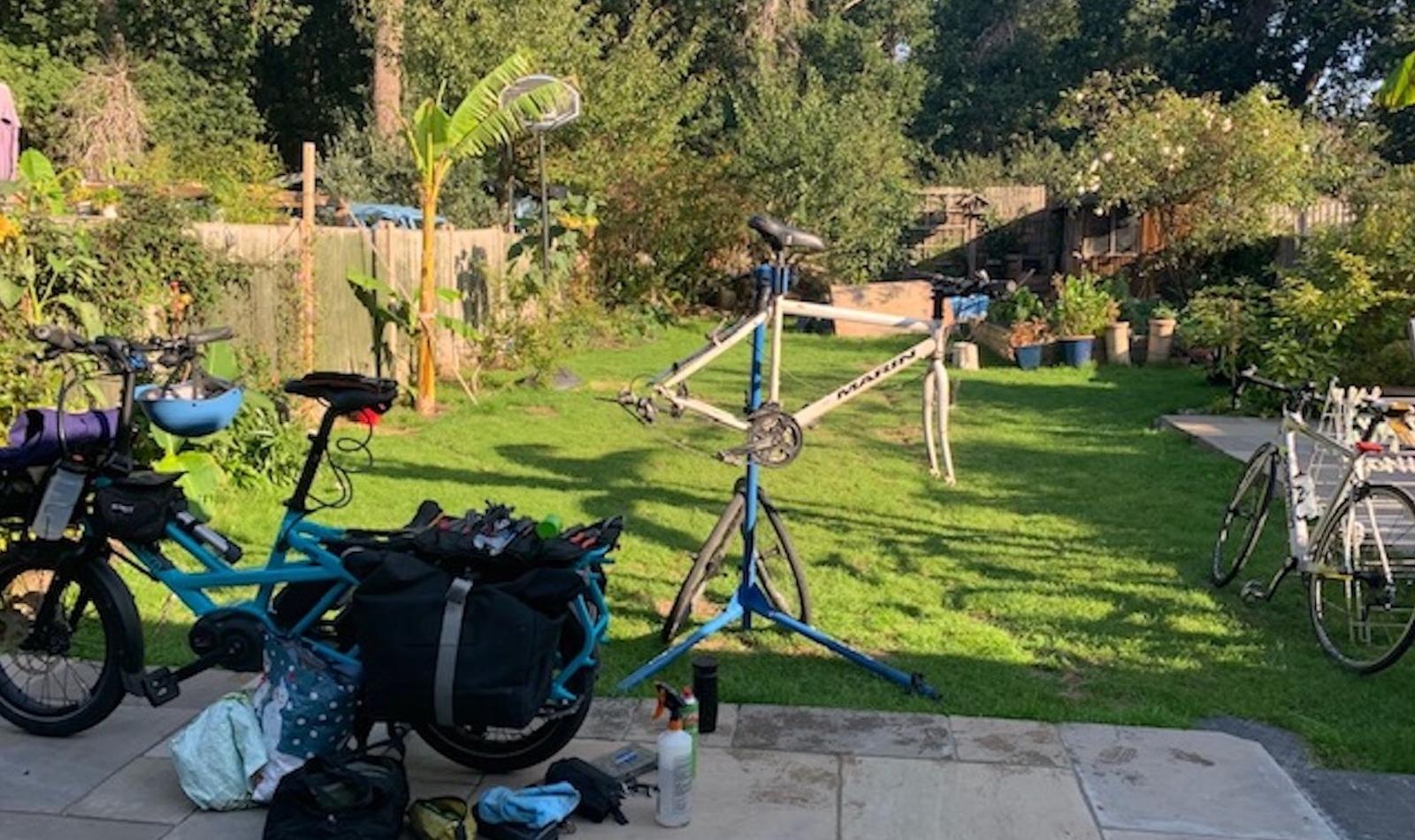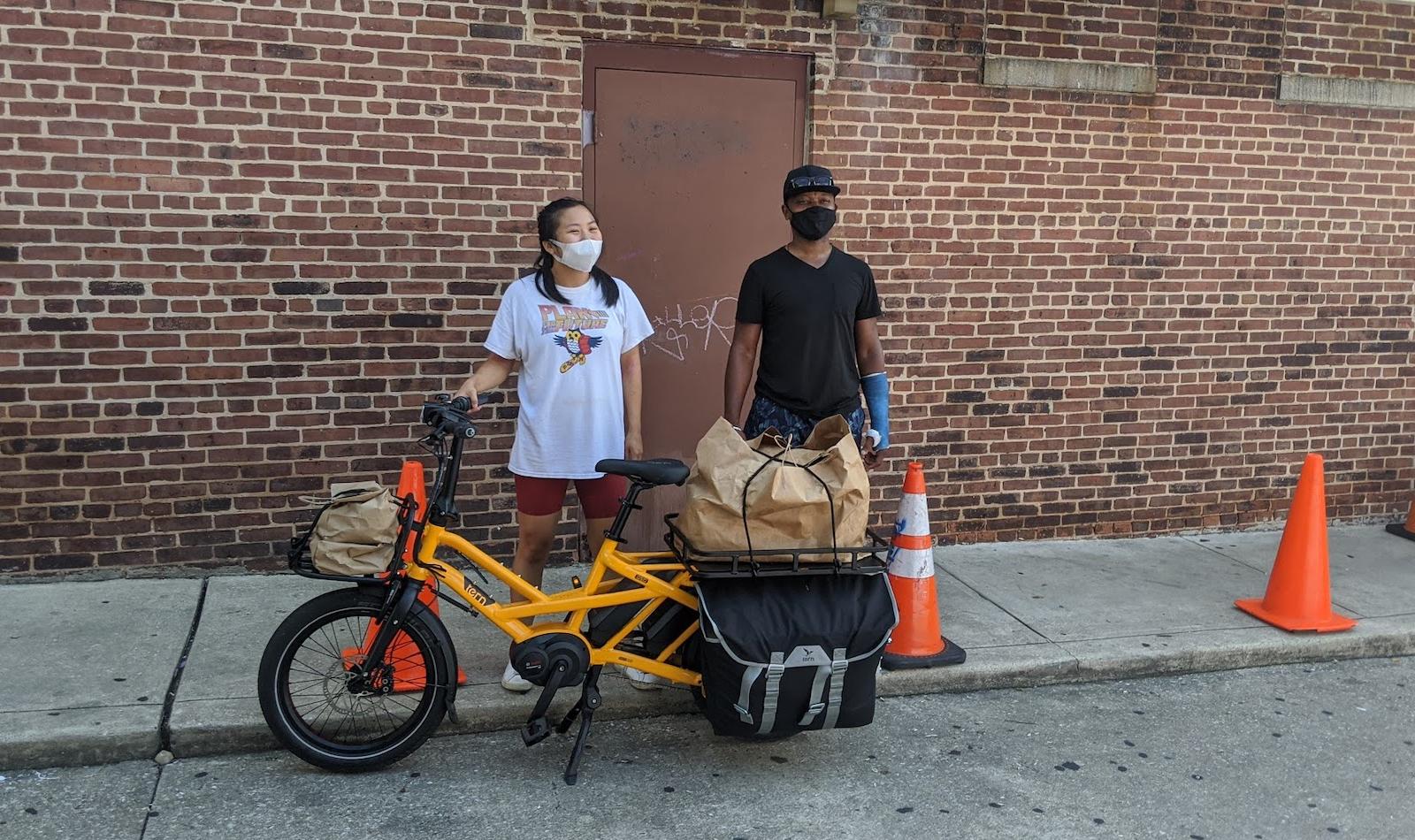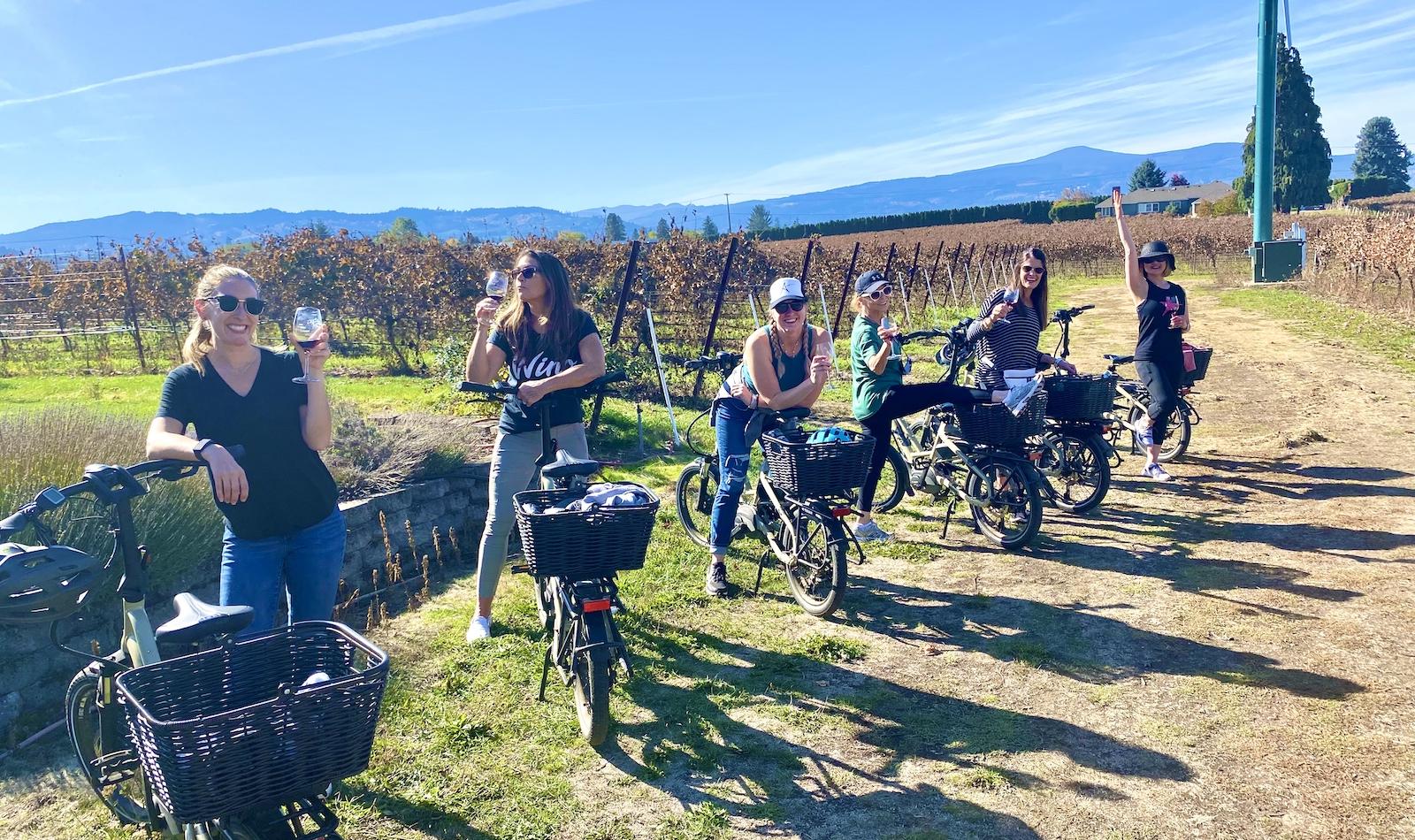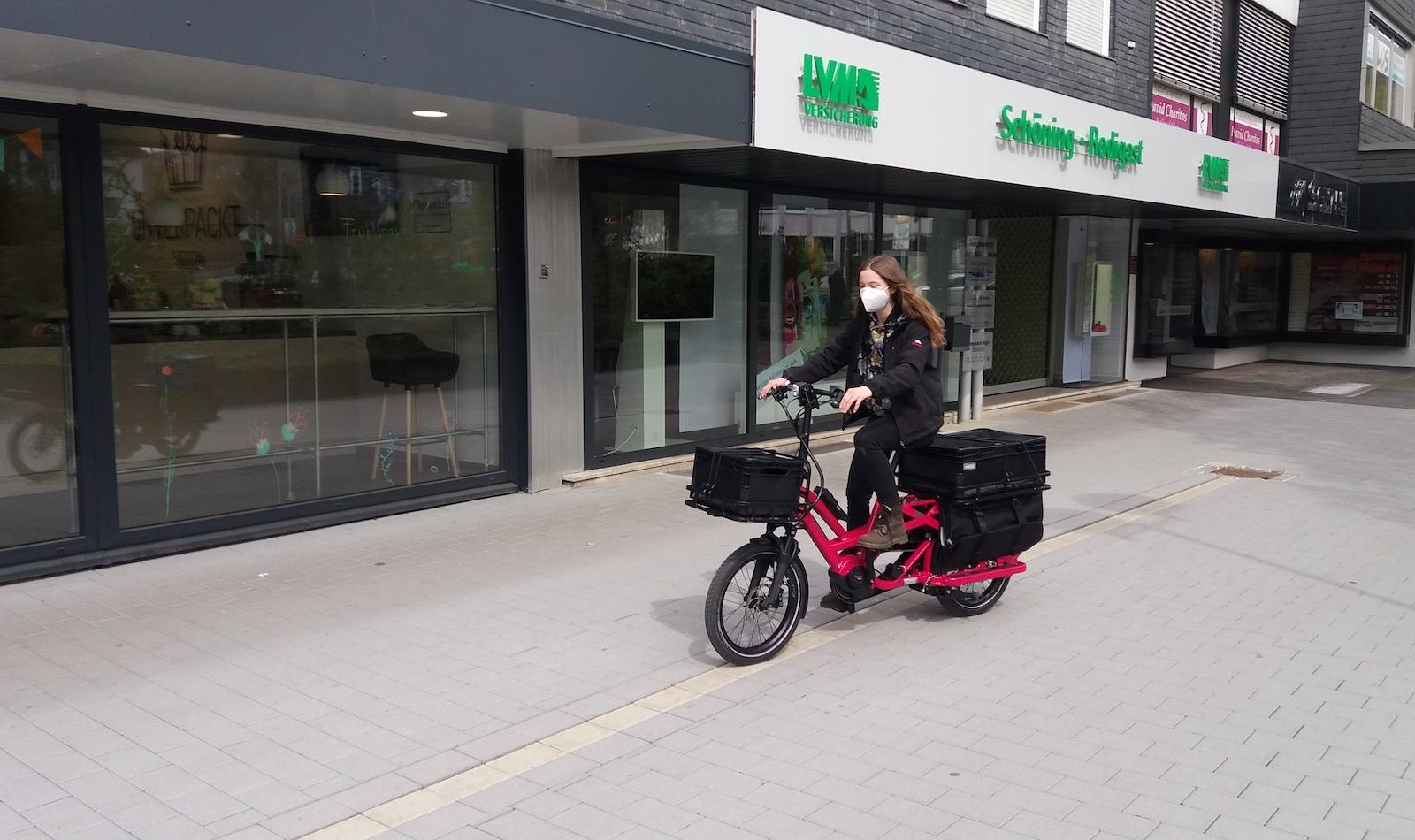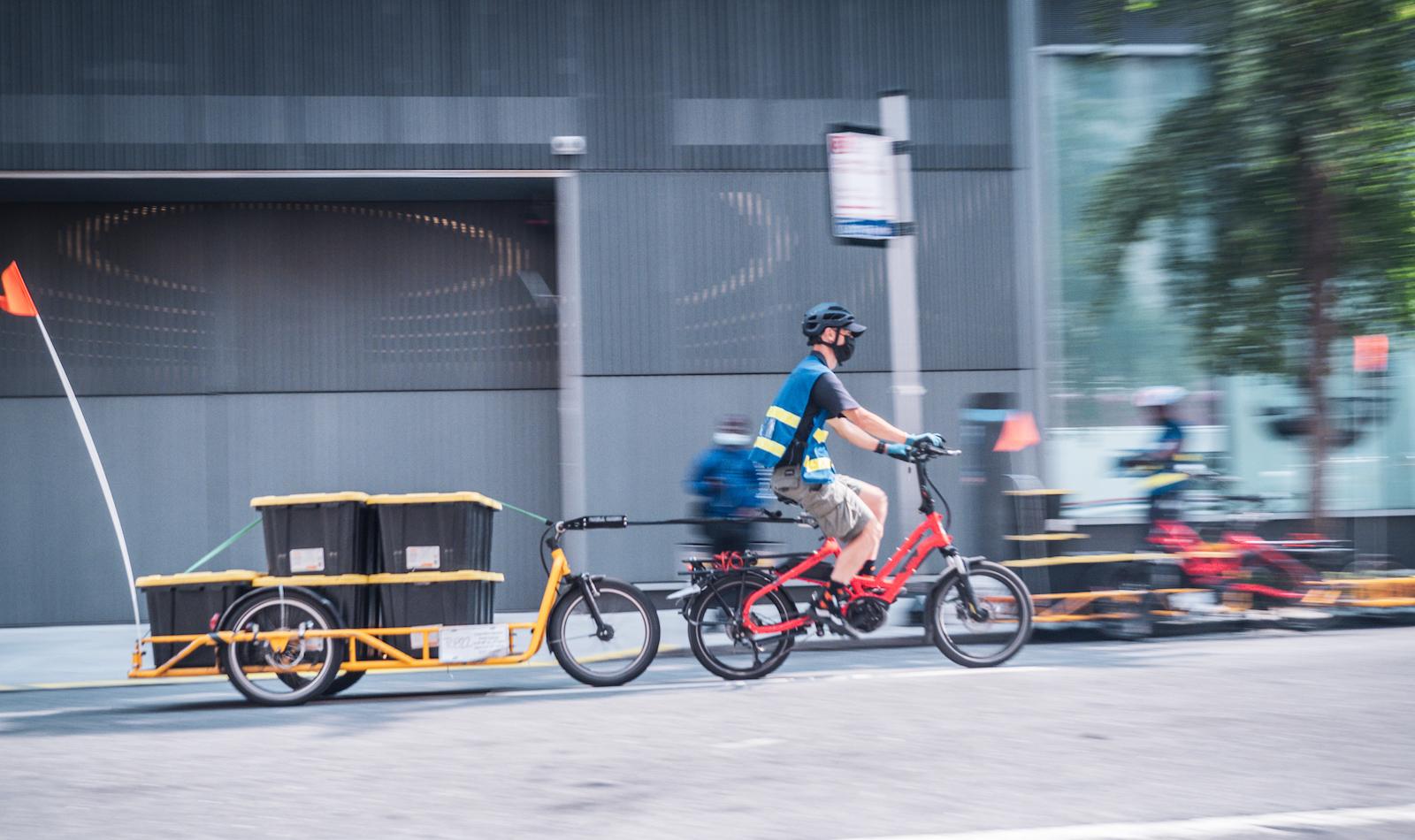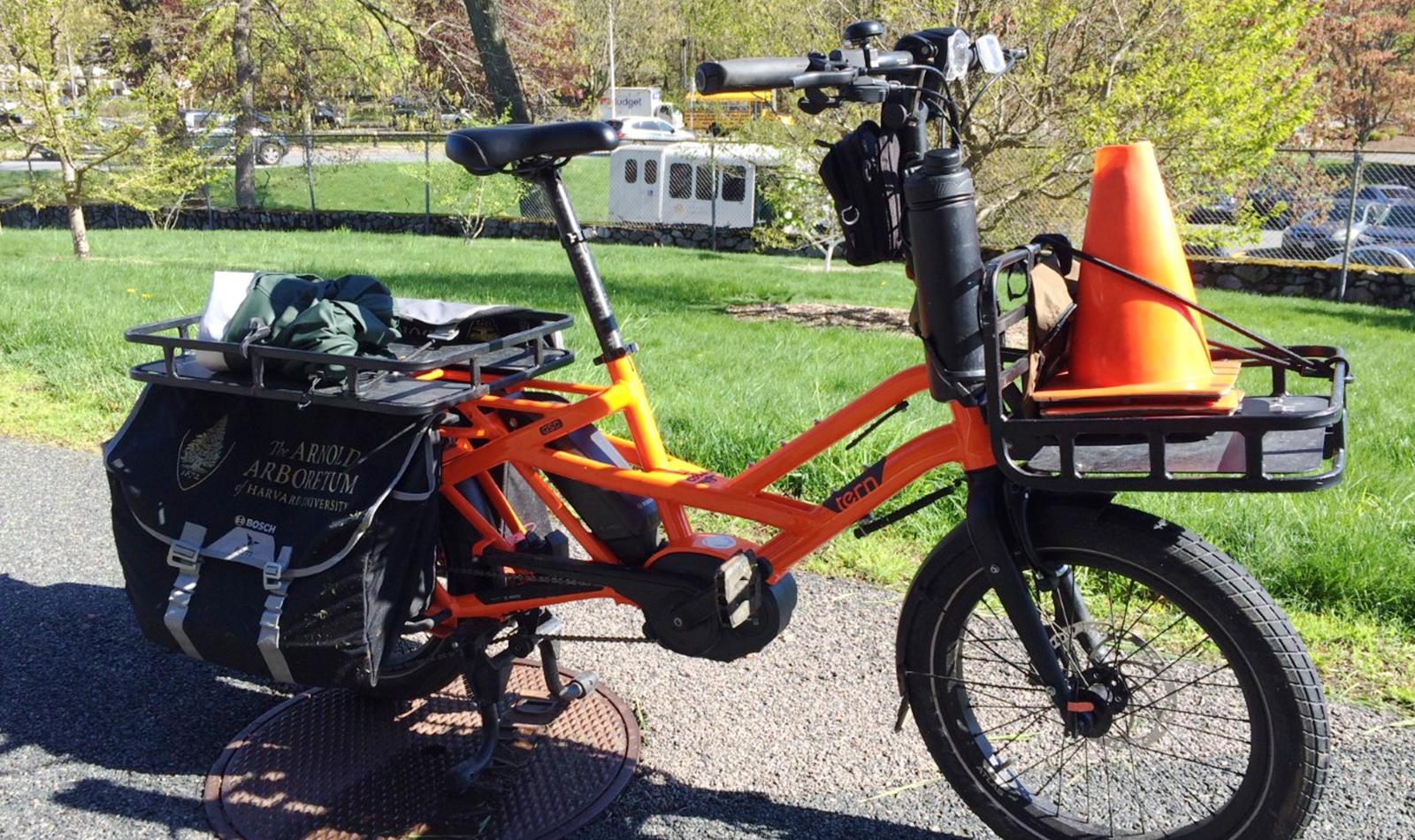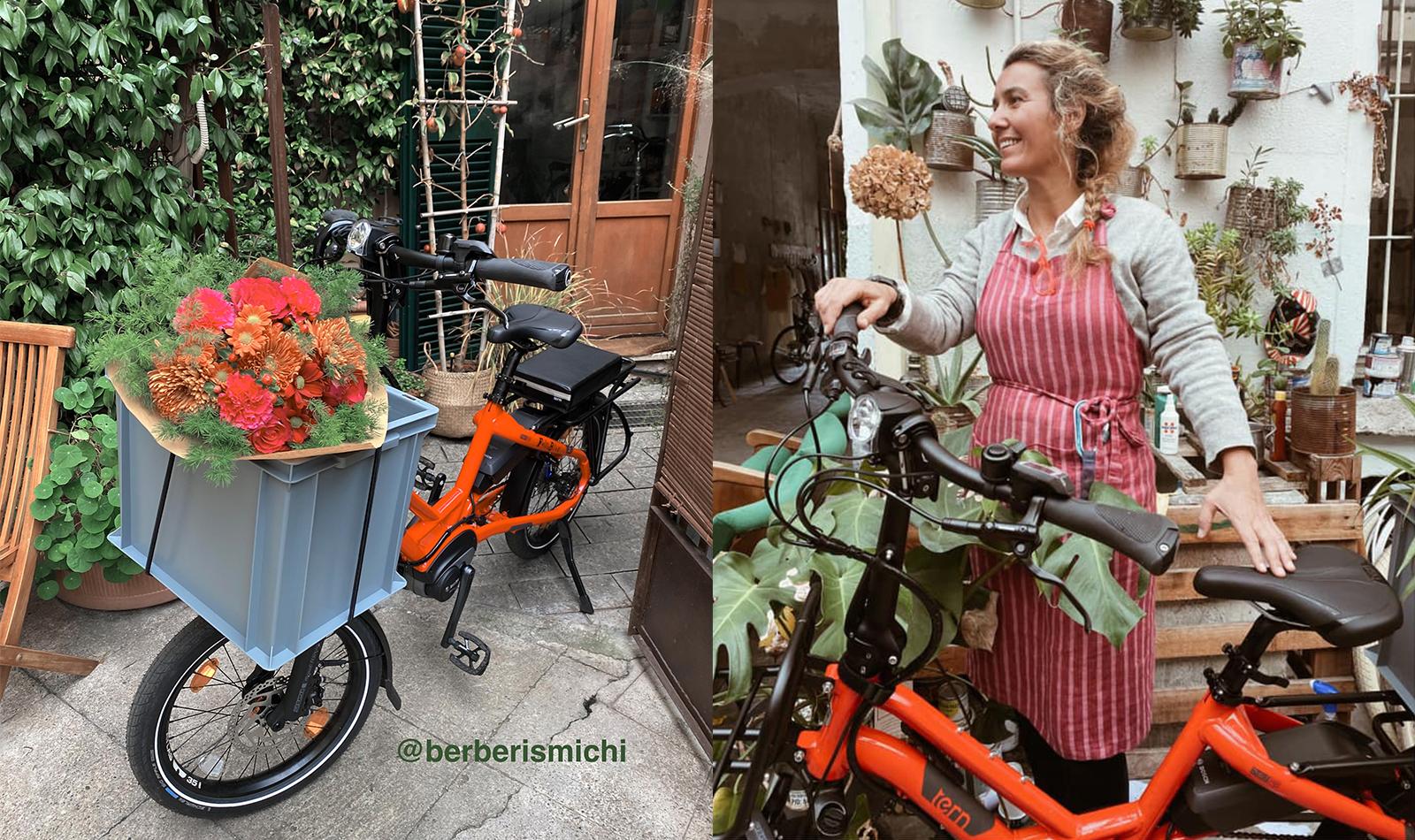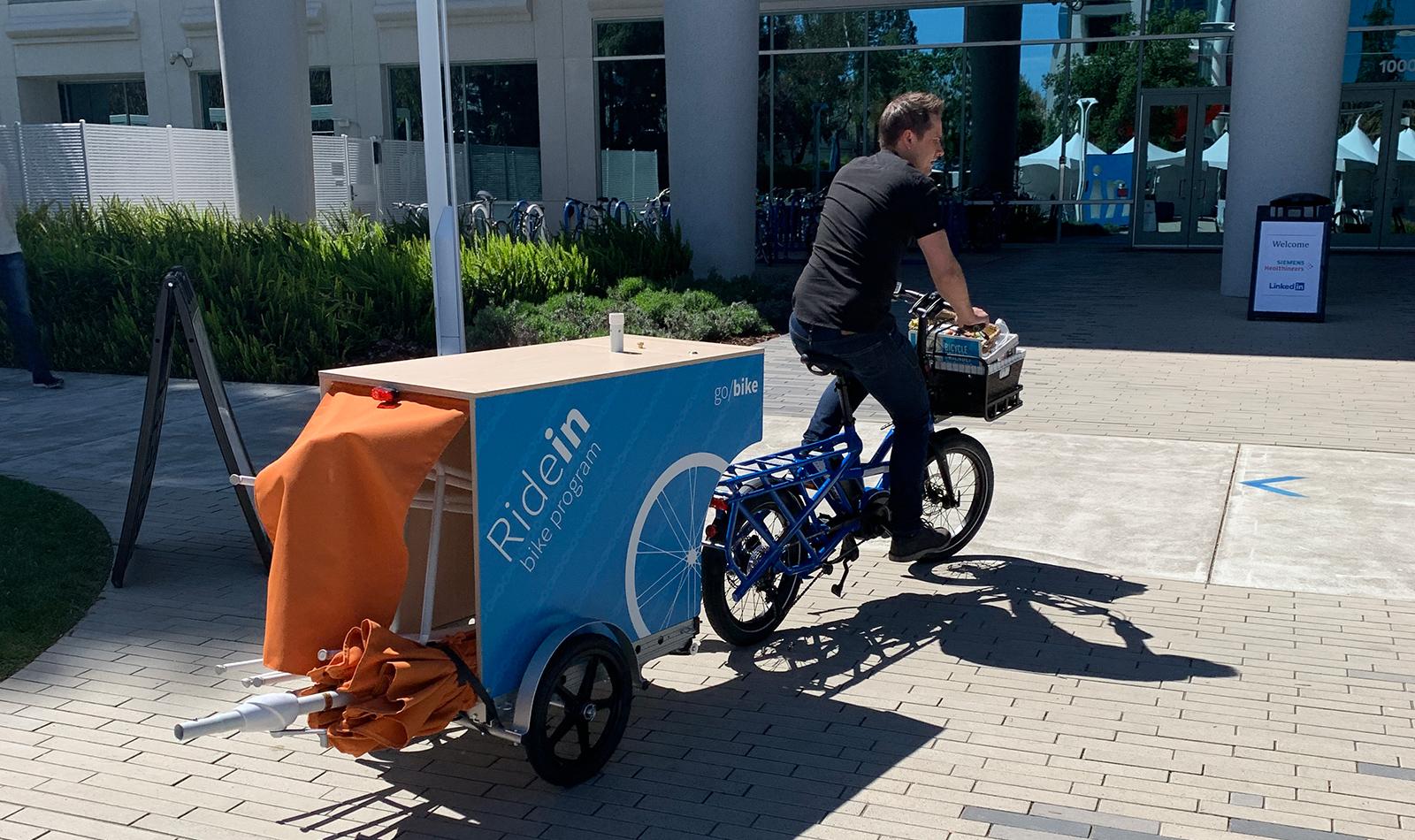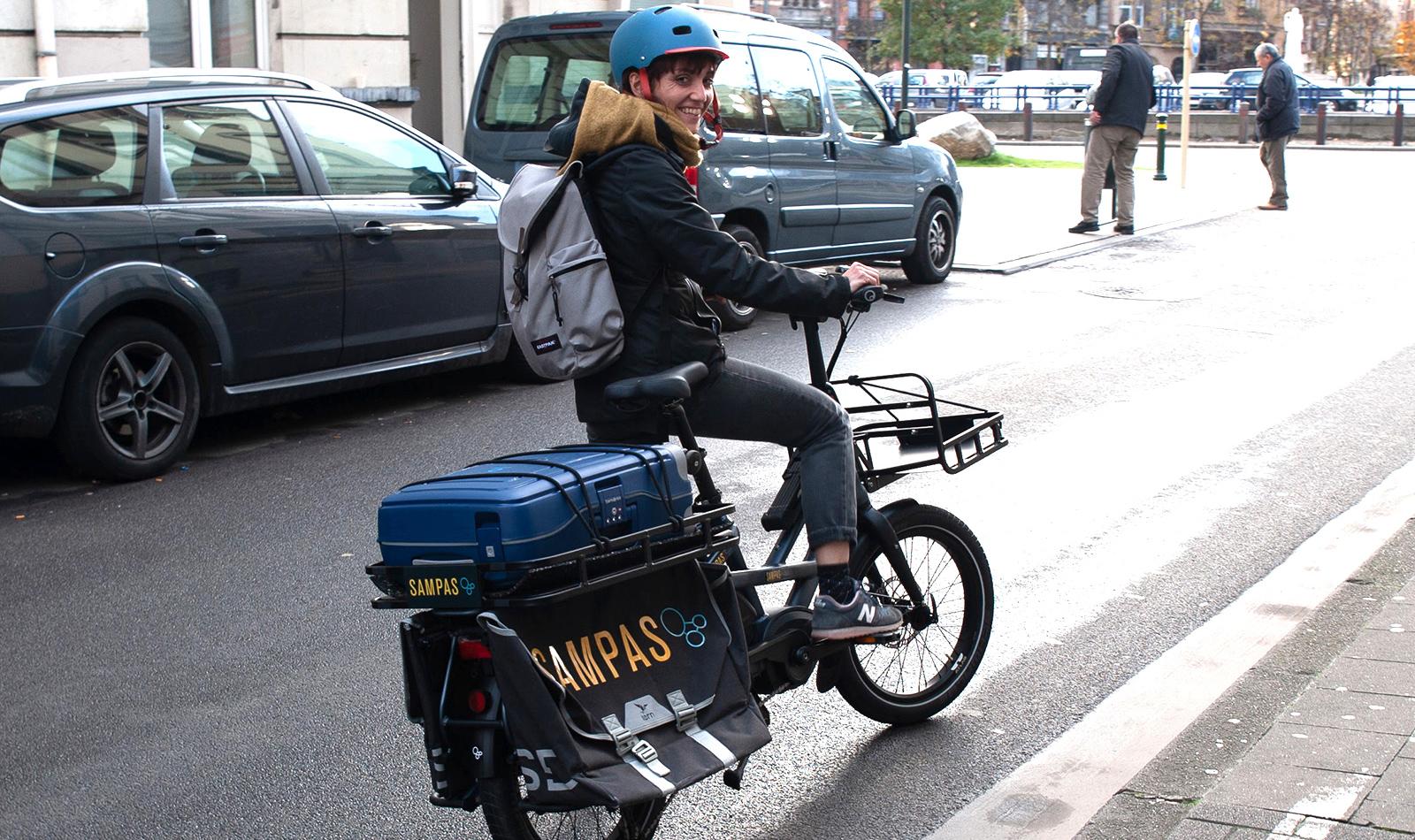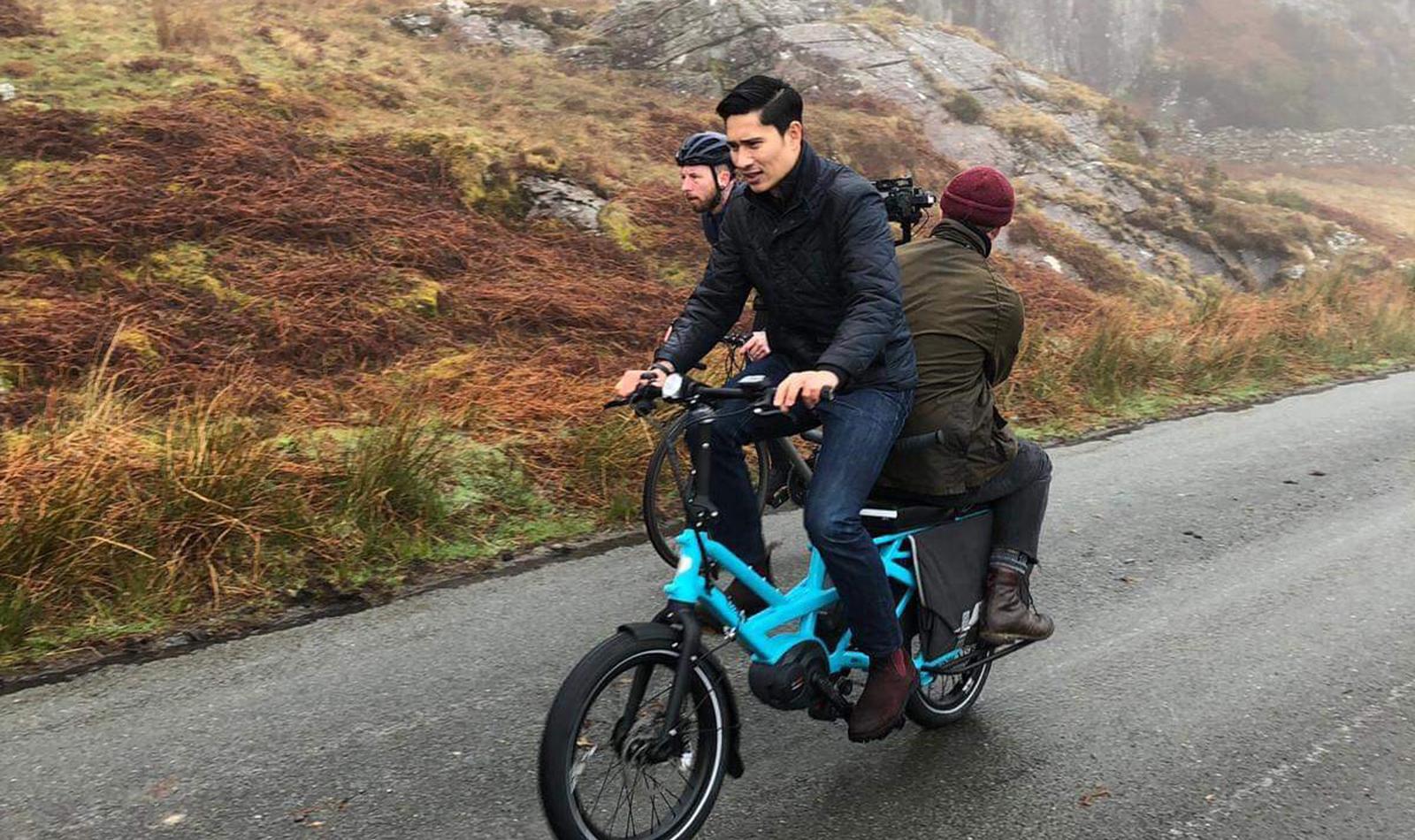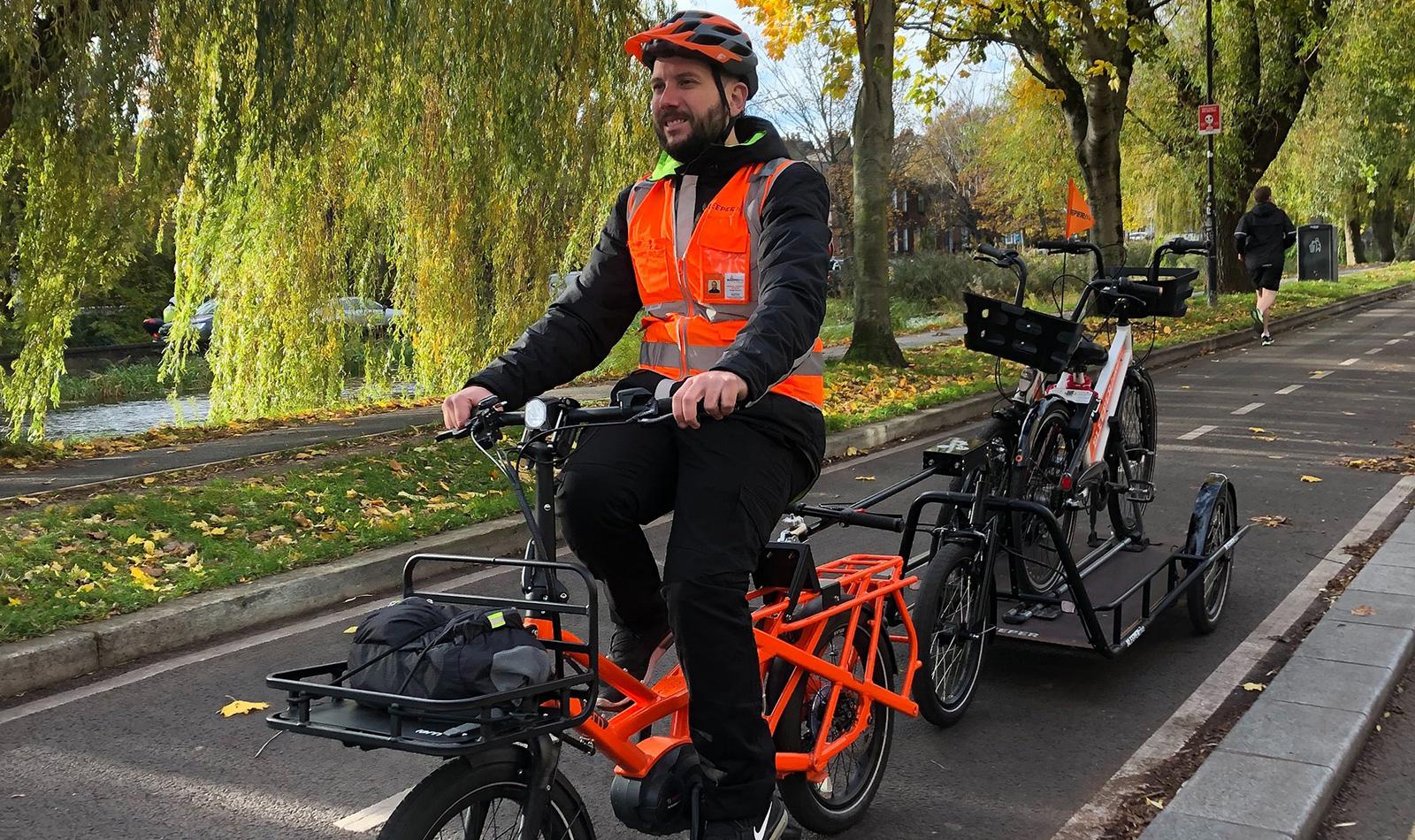(Note: All photos courtesy of, and copyright of Friends of the Mount Vernon Trail)
On a brisk February morning, Judd Isbell slowly pedaled his way to a Friends of the Mount Vernon Trail volunteer event. Like other volunteers, he was happy to devote hours of his free time to help maintain the Mount Vernon Trail, and took pride in the work they did. He was also a driving force behind these weekly meetups–part of a small group that organized the events, spread the word on social media to recruit volunteers, and who gladly hauled all the tools and equipment to the volunteer sites. Well, maybe not so gladly on that winter day.
“There was a miserable headwind,” Isbell recalled. “At the time, I was regularly hauling our equipment using my commuter bike attached to a Surly trailer. I was lugging something like 16 shovels, and I looked down to see I was only going six miles an hour. That was the breaking point. I knew there had to be a better way.” But it was a moment of inspiration rather than frustration. Isbell had already decided what to do.
Becoming Friends
The Mount Vernon Trail is an 18-mile paved multi-use trail that runs near along the George Washington Memorial Parkway and links Fairfax County and the City of Alexandria, to Arlington County and major Potomac River bridge crossings into Washington D.C. Popular with recreation seekers and commuters alike, the trail hosts over one million pedestrians and cyclists annually, and at peak times is one of the most heavily used multi-use trails in the US.
While the National Park Service primarily oversees the trail's maintenance, volunteer efforts to help build and maintain the trail have been essential since its inception. In 2018, the concept of a community-based Friends group to support and advocate for the trail emerged repeatedly during a series of stakeholder meetings discussing the trail's future and exploring possibilities for improvements.
As a daily user of the trail, Isbell attended several of the meetings and saw an opportunity. He rallied two friends to kickstart such a group, initially hosting monthly events to support the trail and gauge community interest. The core soon discovered there was a substantial number of like-minded individuals who also cared about keeping the trail well-maintained. Over the years, Friends of the Mount Vernon Trail continued to grow, and in 2023, 1,465 volunteers provided 3,551 hours of service across 62 events, a 74% increase in volunteer hours compared to 2022.
In 2020, a Mount Vernon Trail Corridor Study was released, opening the door for the group to become an official partner of the National Park Service. According to Isbell, “The report identified several safety concerns along the trail, with specifics like sightline problems at corners. Those specifics served as actionable items for us, and the scope of our work became outlined more broadly, focusing on safety enhancements, invasive vegetation management, and minor structural improvements. The Park Service has been supportive, allowing us a certain level of autonomy while ensuring our work aligns with their objectives.”
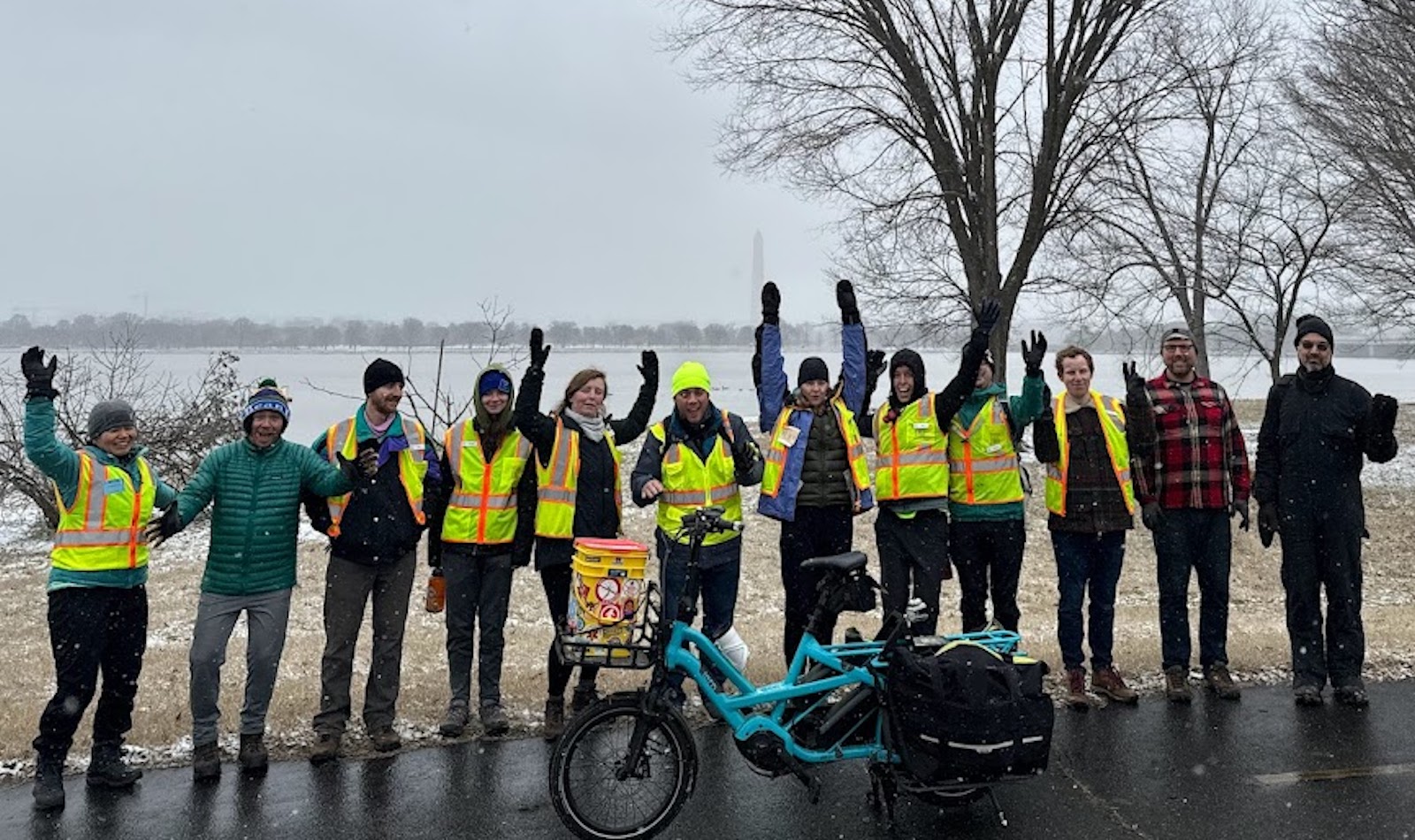
Scaling Up With The GSD
The group meetups initially focused on addressing small but impactful issues that don't require specialized skills, such as trimming overhanging branches, clearing minor obstacles, and removing invasive species like English Ivy. Tackling these small yet bothersome problems has helped improve the overall experience for everyone on the trail. This approach has also allowed the Park Service maintenance staff to focus on larger, more complex tasks that demand specialized expertise, such as building maintenance or carpentry work.
As participation grew, so did the amount of equipment needed for the weekly volunteer events, which posed a challenge. It was while facing that chilly winter headwind that Isbell had his epiphany. The answer was an electric cargo bike. He decided to make the move to acquire a Tern GSD. “I had test-ridden the GSD before and liked it, but it was at that moment I realized I needed it," Isbell noted. “It was kind of life-changing; suddenly we were able to haul so much stuff, and it opened up the door to hauling even more stuff.”
“We now have two GSDs, and the cargo bikes have been instrumental in helping us scale our events. Our largest gathering included 160 volunteers, an achievement made possible due to the cargo bikes' capacity. They enable us to transport more equipment directly to the work location. Without this capability, we'd spend valuable time relocating heavy gear manually. The bikes essentially offer on-the-spot convenience.”
“The benefits were more than just the amount of cargo we could carry. The bike accommodates riders of all different heights, so everyone on our team can use it. And the GSD's low center of gravity and Bosch engine make it easy to handle and manageable even for smaller individuals. Additionally, hauling a loaded trailer has posed no issues concerning stability.”
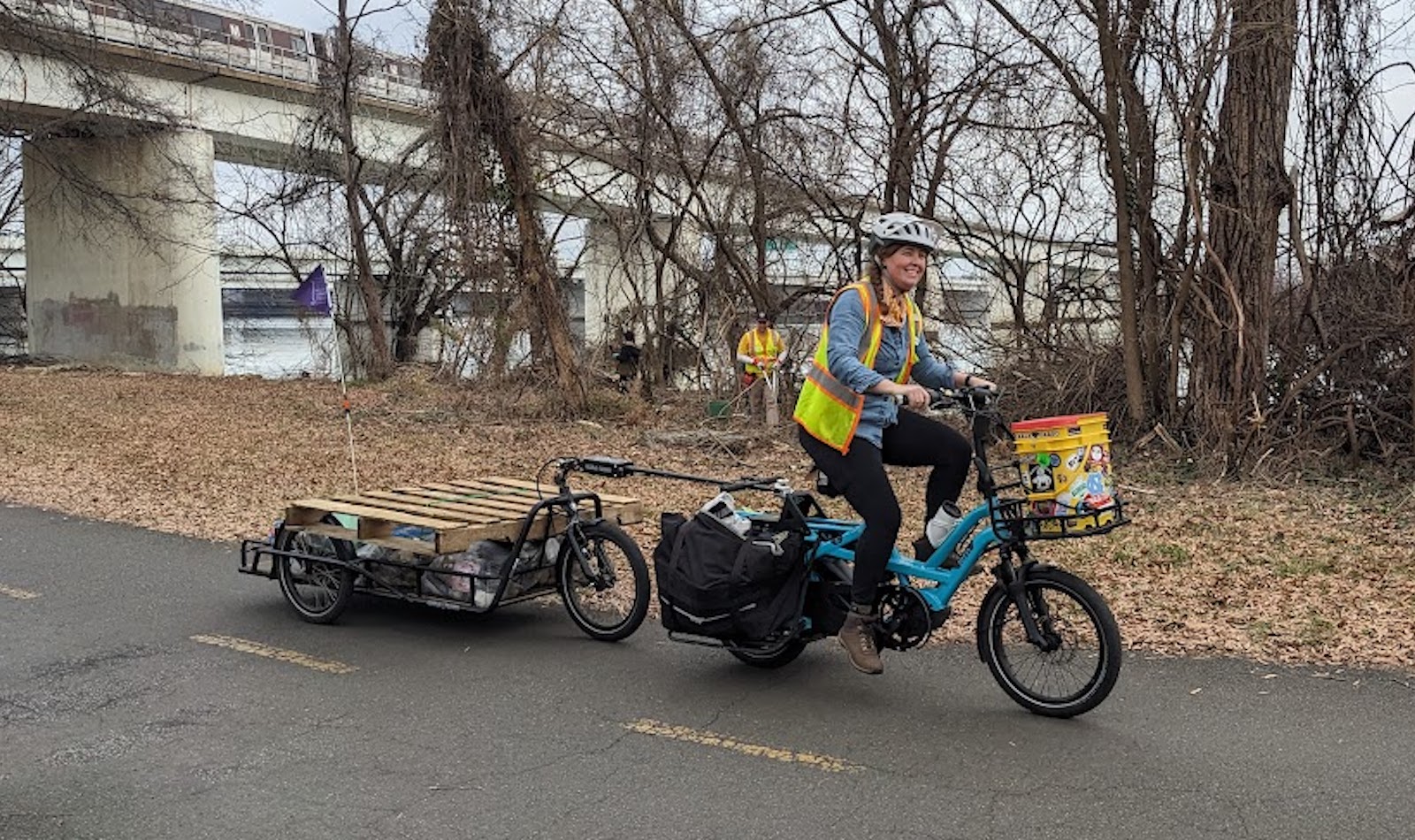
Getting More Ambitious With a Carla Cargo
With minor structural improvements being part of the scope of operations for Friends of The Mount Vernon Trail, the group realized having a cargo bike could help them do more. Being ambitious, the group also decided to add a Carla Cargo trailer to their fleet in order take on even bigger challenges, such as pressure washing bridges to remove slippery biofilms.
Another structural improvement the group addressed was the removal of trail bumps. “If you look at the history of the Mount Vernon Trail, the first segments were built by volunteers during a time with no trail standards,” explained Isbell. “In other places, the trail just followed existing bridle paths. Trees were not cut down for the sake of having a straight trail. Consequently, root heaves created uplifts along the trail, which have posed safety hazards.”
To flatten the bumps, Isbell and several other team members received training on an Edco CPM8 scarifier, which weighs about 200 pounds. The bump-flattening setup also includes equipment such as HEPA vacuums and generators, as well as other tools for the 20 to 40 volunteers needed to support the job. Isbell stated the team loads approximately 600 pounds onto the two GSDs and trailers when doing bump work.
Much of the equipment is housed on the Carla Cargo when riding out to bump sites. The Carla fits up to 1500 cubic liters of cargo, and the trailer’s hydraulic overrun brake helps keep the heavy loads stable and in control when navigating the busy multi-use trail. Carla also has three wheels for added stability, and once detached from the bike it is used as a handcart to simplify loading and unloading of equipment. As of March 2024, close to 700 bumps have been flattened on the trail.
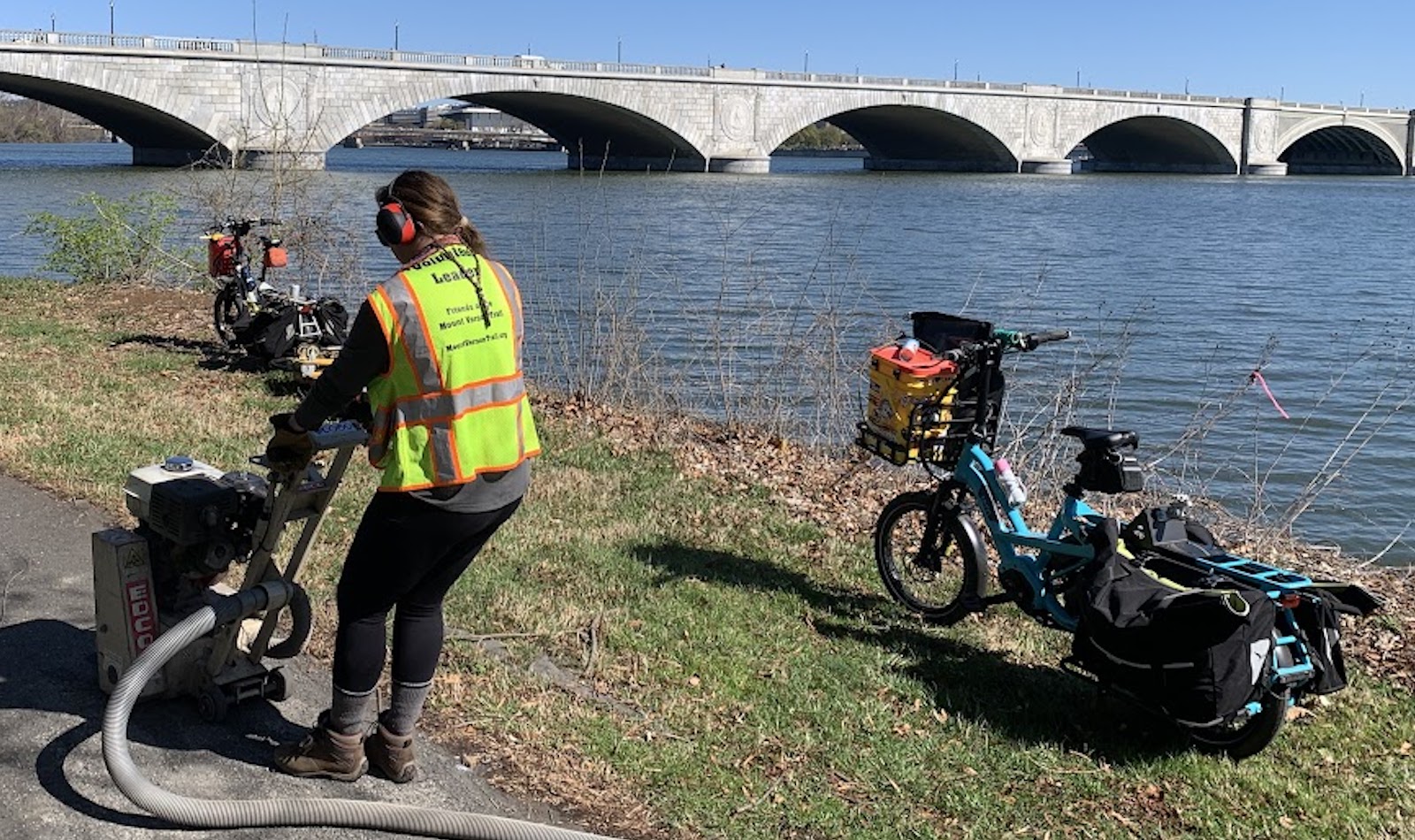
Right Vehicle for the Job
The National Park Service primarily uses larger vehicles like F-150 and F-350 trucks. So when they need to work on the trail, they drive on the parkway until they reach a point close to the trail with suitable space to park. Sometimes, this means hauling equipment quite a distance. Additional challenges arise with weather events like rain or snow, which make it difficult to pull off onto wet grass without damaging the landscape.
Isbell argues that the flexibility and efficiency of cargo bikes like the GSD plus a trailer like the Carla Cargo surpass traditional vehicles like an F-150 for his group’s purposes. The ability to navigate narrow trails and reach remote locations without damaging the surroundings is invaluable. Additionally, the agility of cargo bikes allows for quicker access and reduced environmental impact compared to large vehicles. “It's a game-changer,” stated Isbell. “It enables us to carry substantial loads efficiently and effectively while minimizing both our environmental and carbon footprint.”
Utilizing cargo bikes also makes sense cost-wise for fleet operation. The budget for a fleet of trucks needs to address items such as registration, emissions, oil changes, and fuel expenses. The operational cost of using cargo bikes is minimal in comparison. There are also additional costs associated with vehicle training and mandatory liability insurance for a fleet of trucks. These hidden expenses add up considerably. “When our liability insurance queries the number of vehicles (trucks) we have, the answer is zero,” Isbell stated.
While there are plenty of maintenance issues that require the use of a truck, having a hybrid maintenance fleet makes sense when managing such a diverse set of tasks and environments.
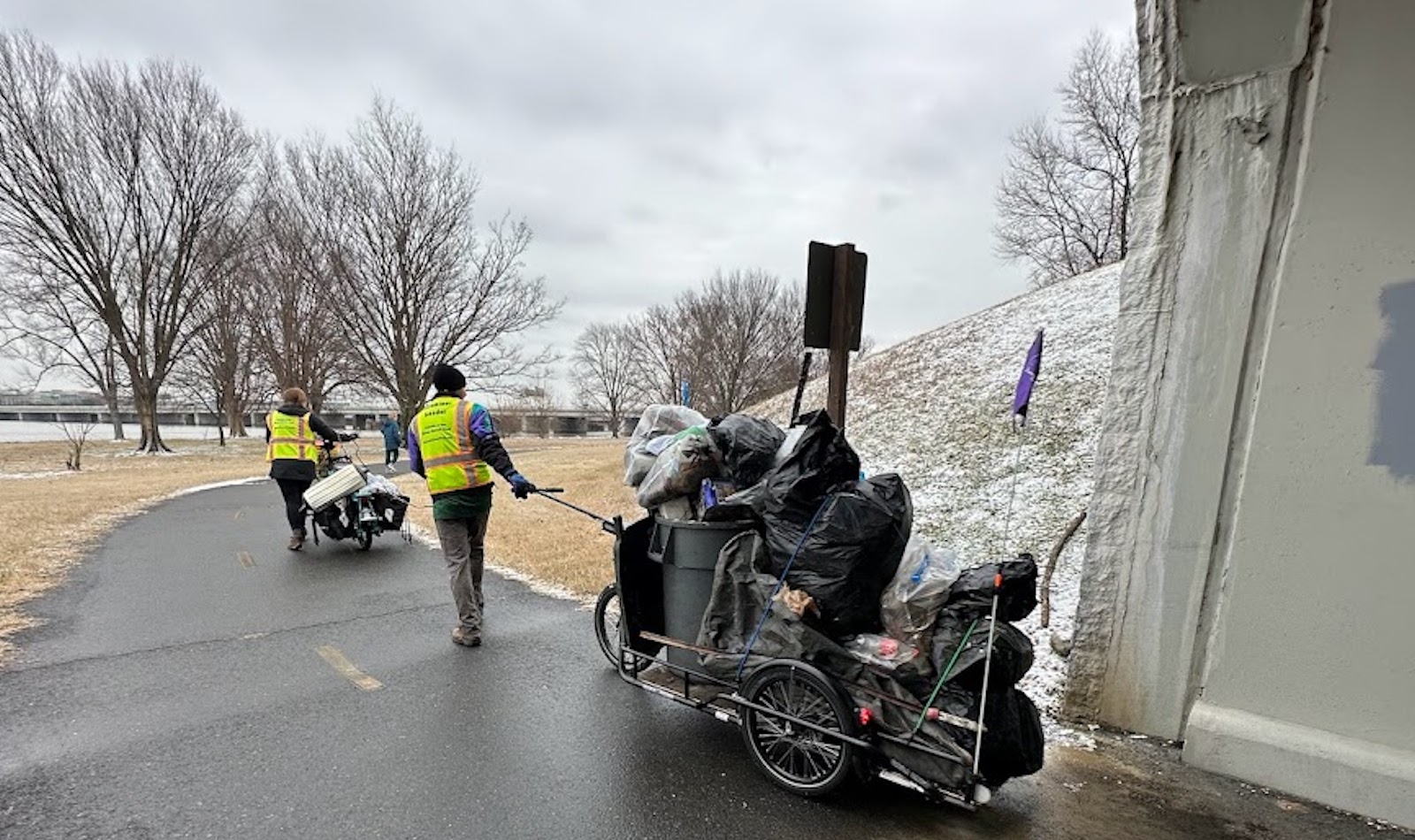
Starting a Friends Group
When asked what advice he would give to others who wanted to start a Friends group in their community, Isbell’s key message is to have the mindset of a beaver, the mascot of Friends of the Mount Vernon Trail. “How does a beaver build a dam? One stick at a time,“ he said. “So, just do something; take the initiative, like putting a post on social media saying you’ll be in the park to pick up trash and others are welcome to join. Taking that first step is crucial.”
The Mount Vernon Trail itself is the result of this kind of thinking. It was started by Ellen Pickering and Barbara Lynch, two women who organized volunteers to build the original trail. Two women who said, Why don’t we? And then did.
Learn more about Friend of the Mount Vernon Trail
- Website
- History of the Trail (Learn how Ellen Pickering and Barbara Lynch inspired volunteer activism on the trail)
- What to expect at a volunteer event (Video 1:30 min)
- Start of an event (Video 0:53 min)
- Removing invasive Honeysuckle (Video 1:24 min)
- How to remove invasive English Ivy (Video 3:57 min)
- Patching potholes (Video 1:16 min)
- Evicting bridge trolls with a pressure washer (Video 1:58 min)
- How an Edco CPM8 scarifier is used to make the trail safer (Video 1:28)
- Flattening bumps (Video 1:35 min)
- Removing snow (Video 1:12 min)
- Hauling 600 lbs of gear (Video 2:13 min)


